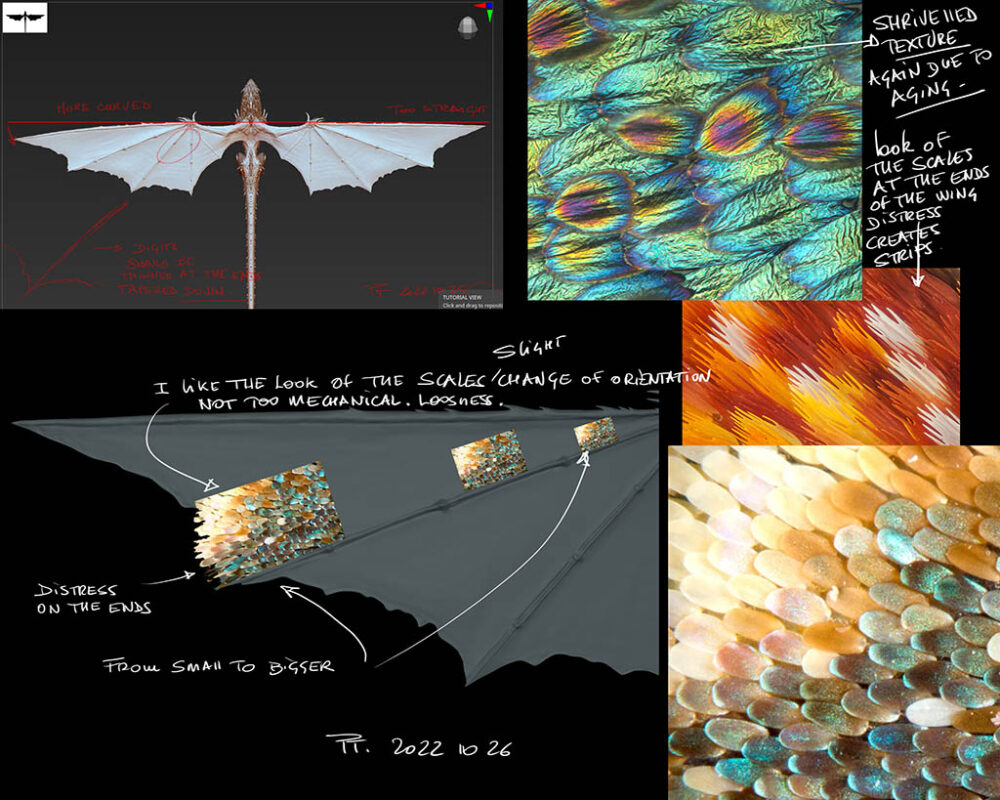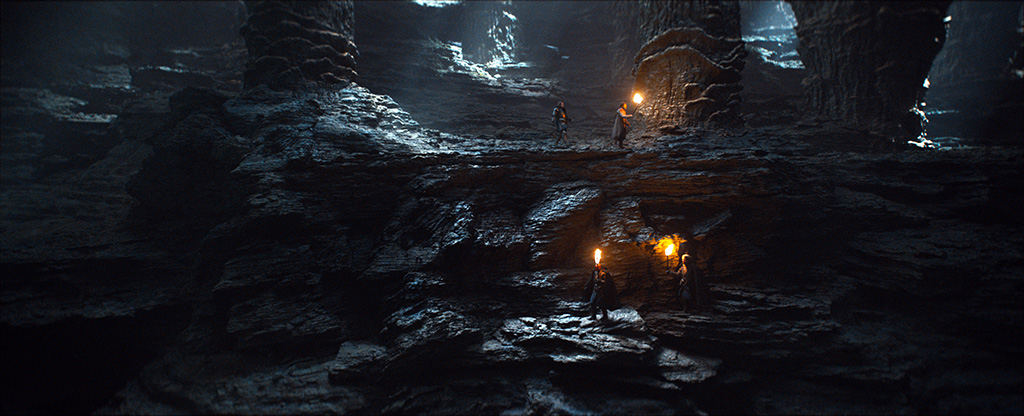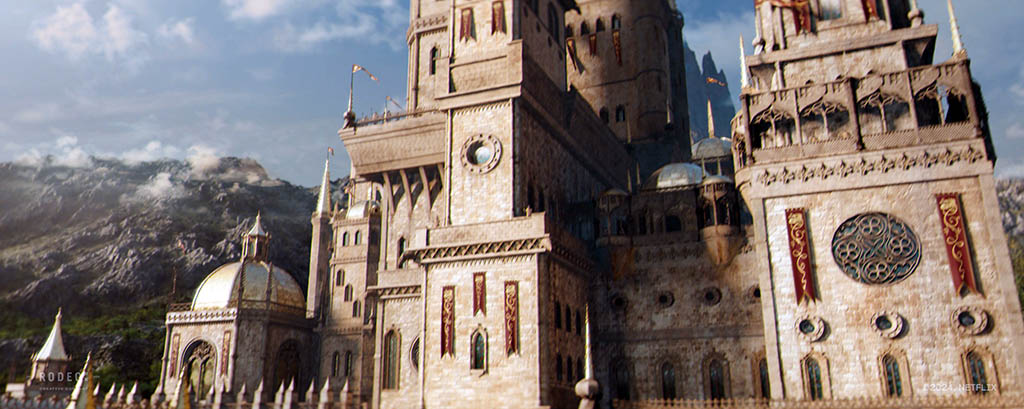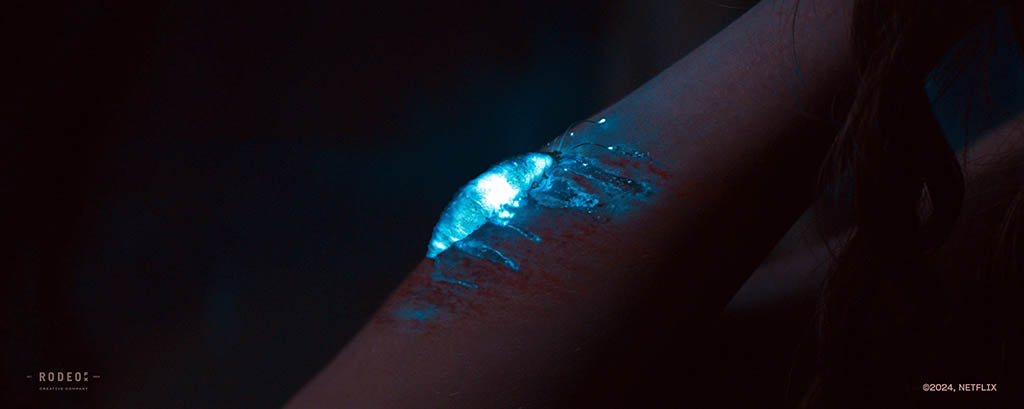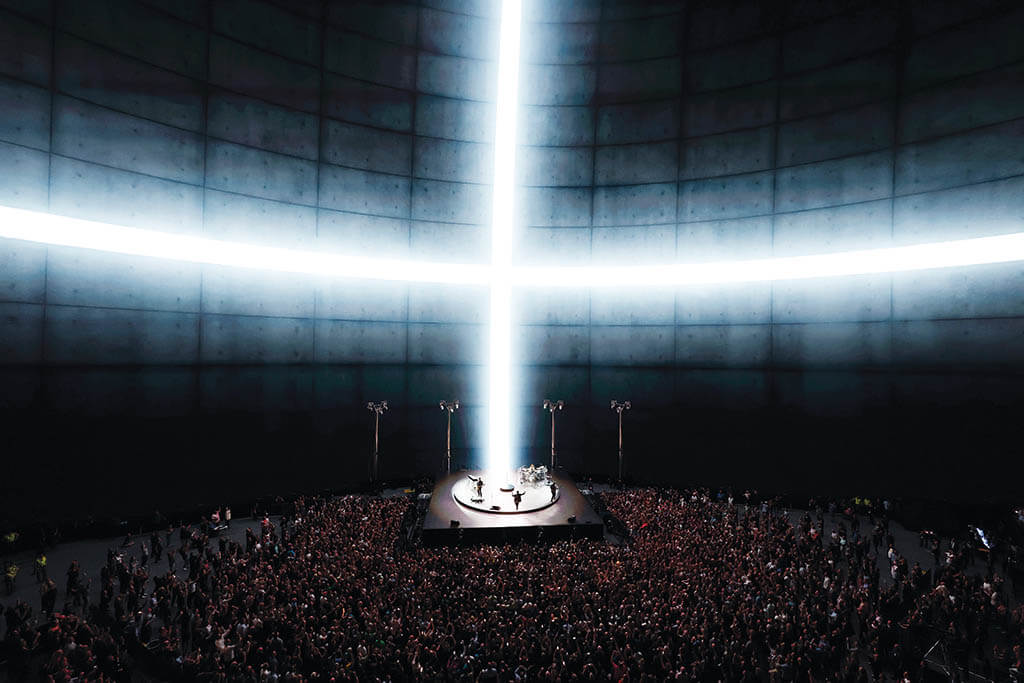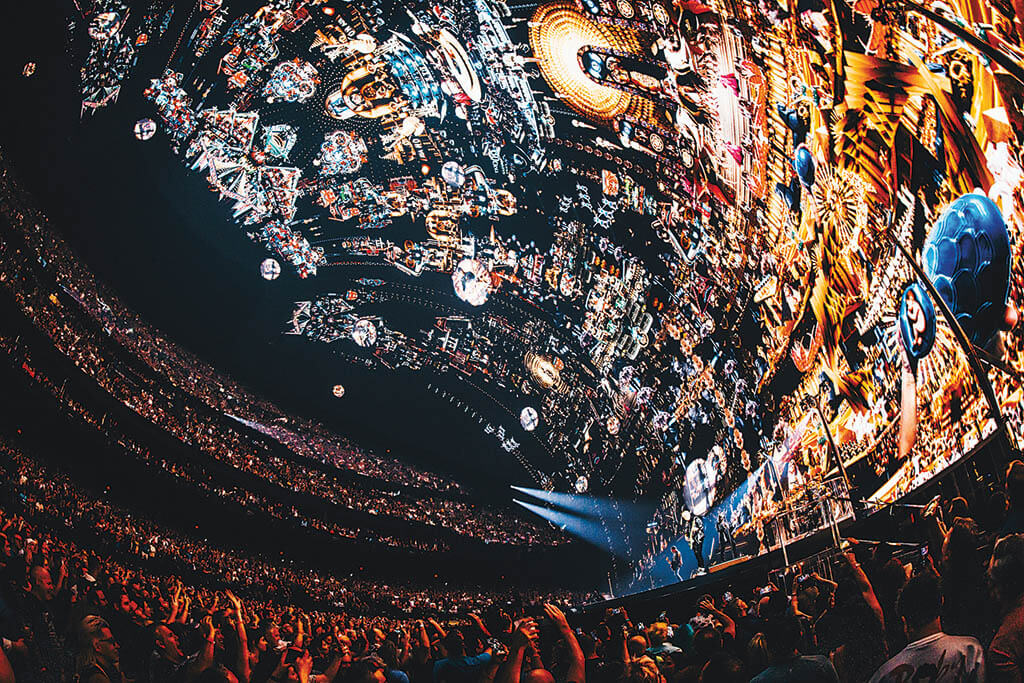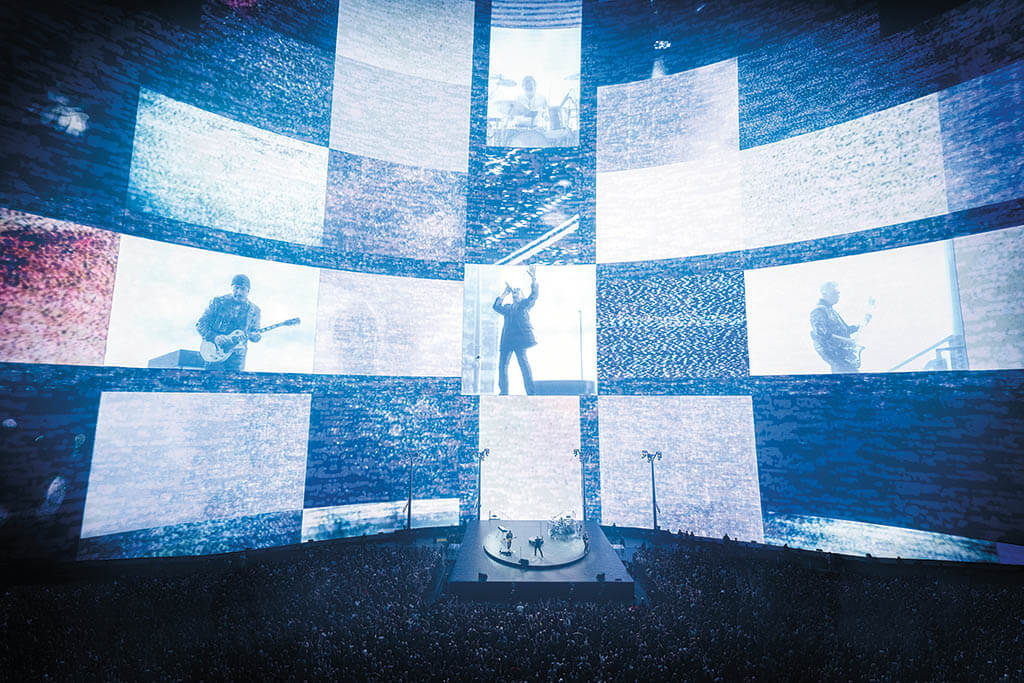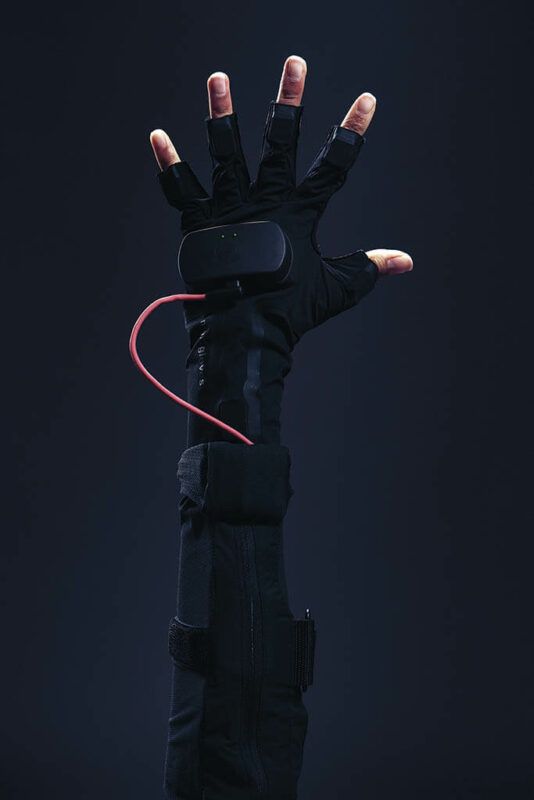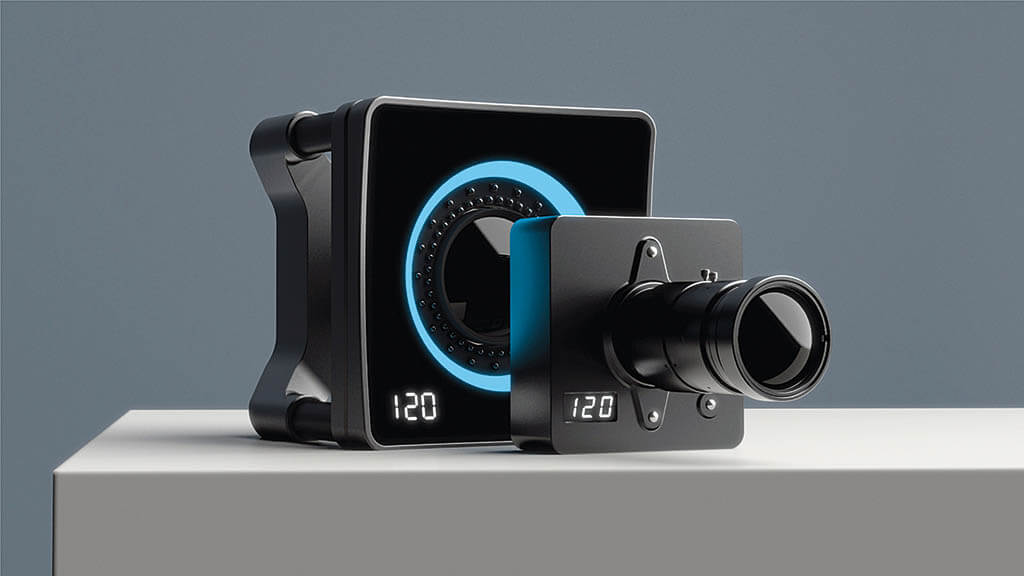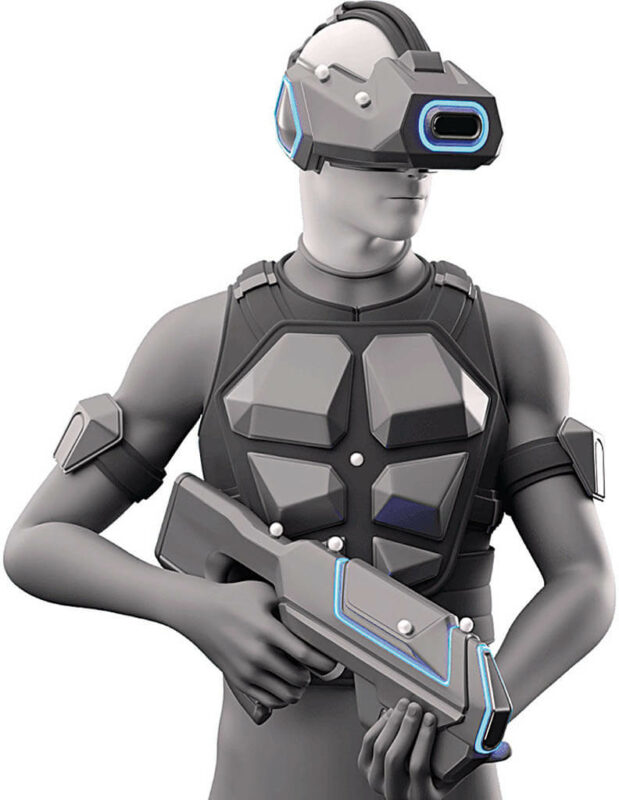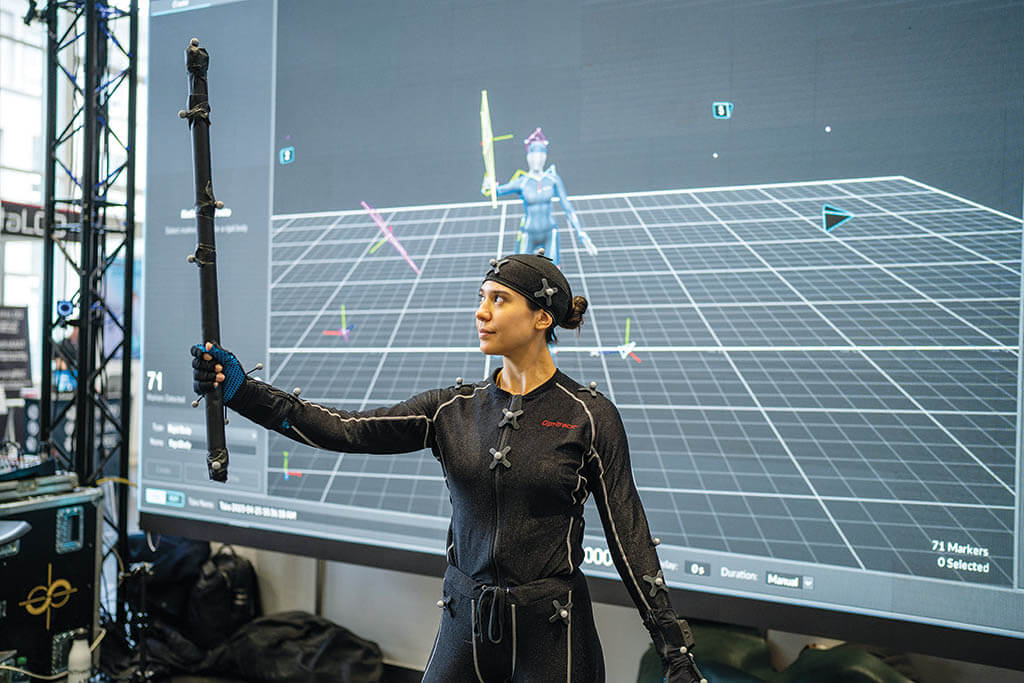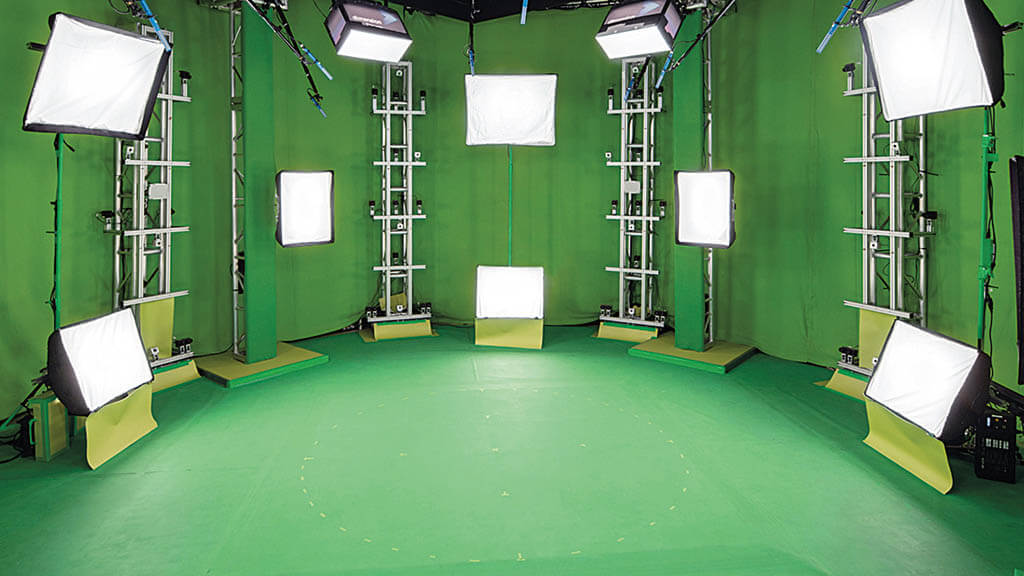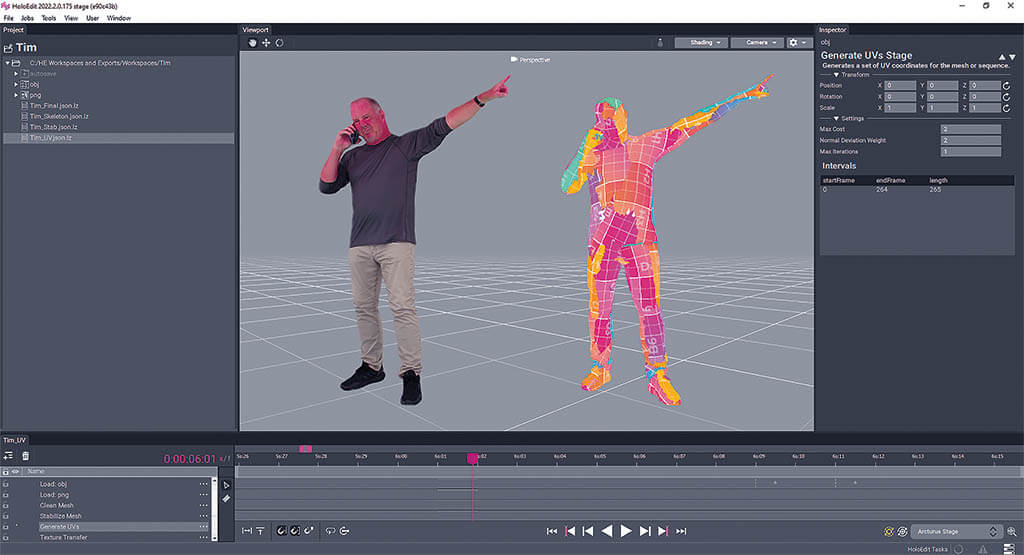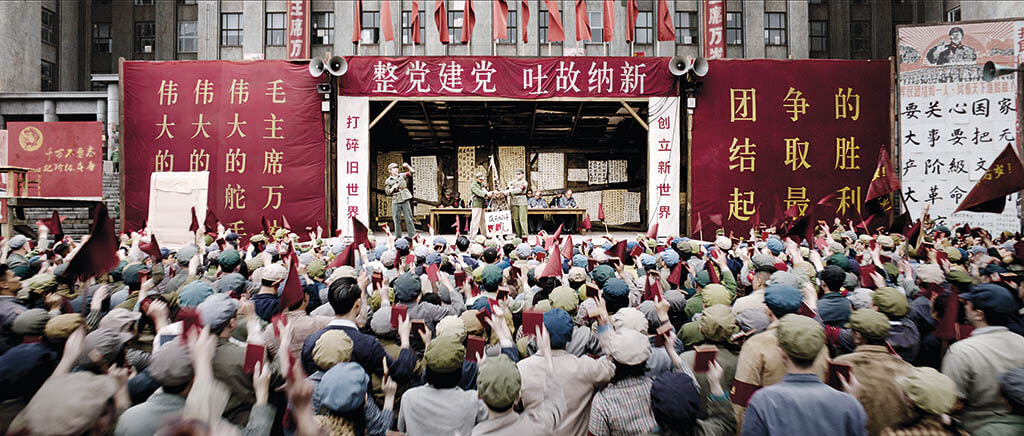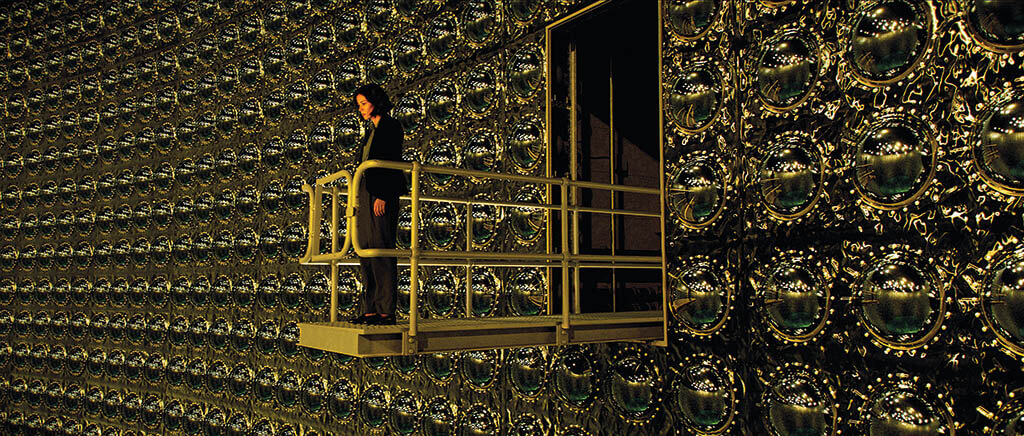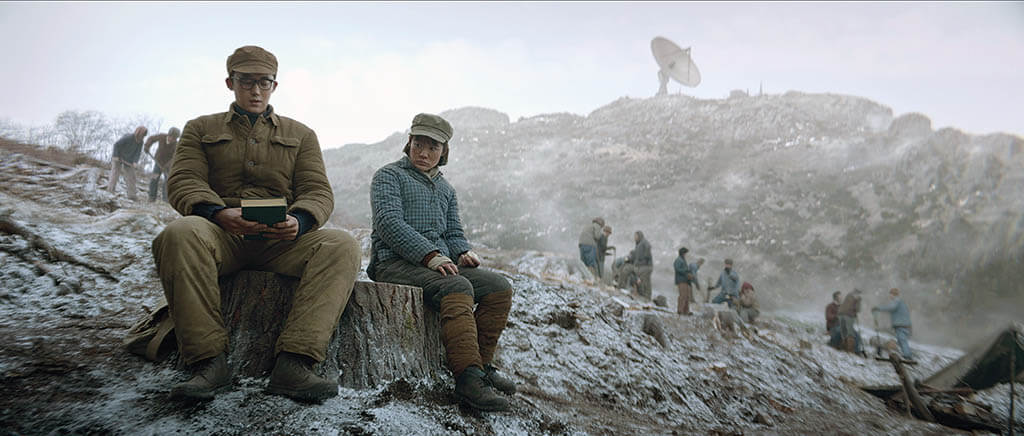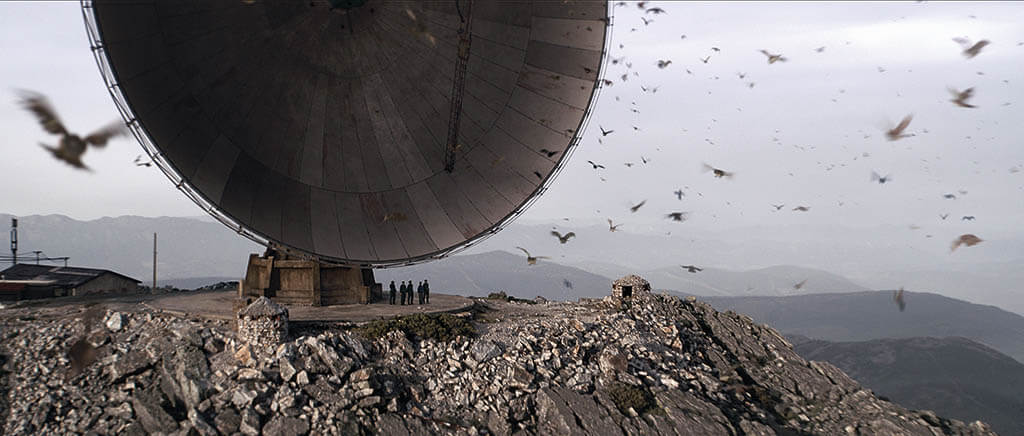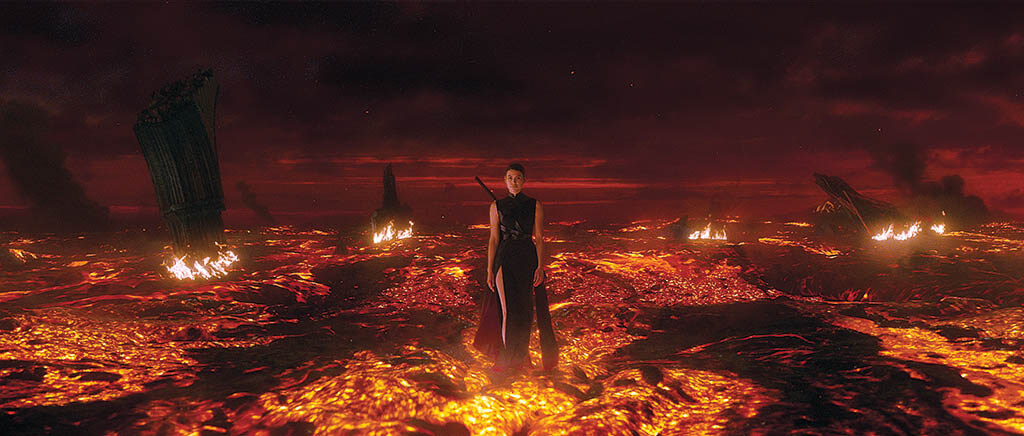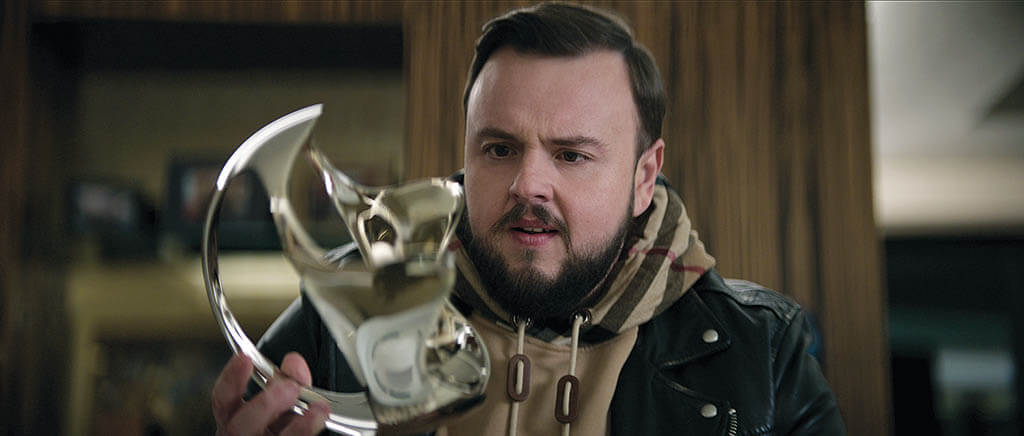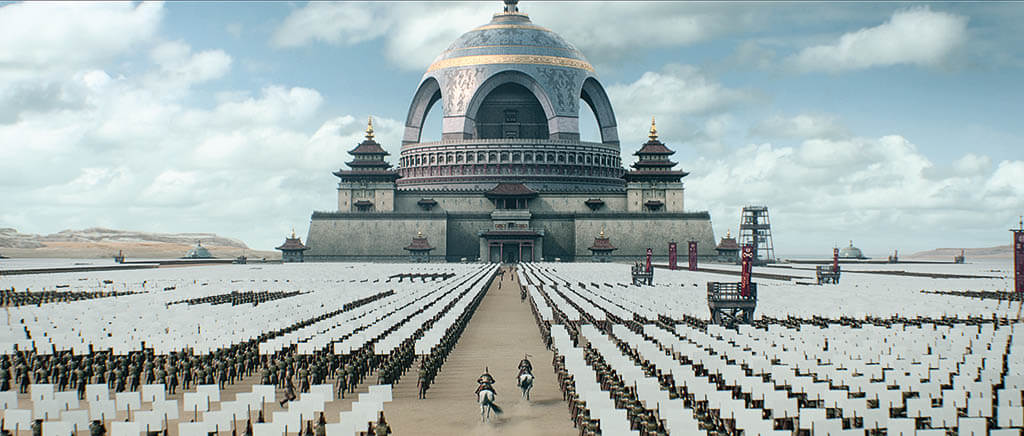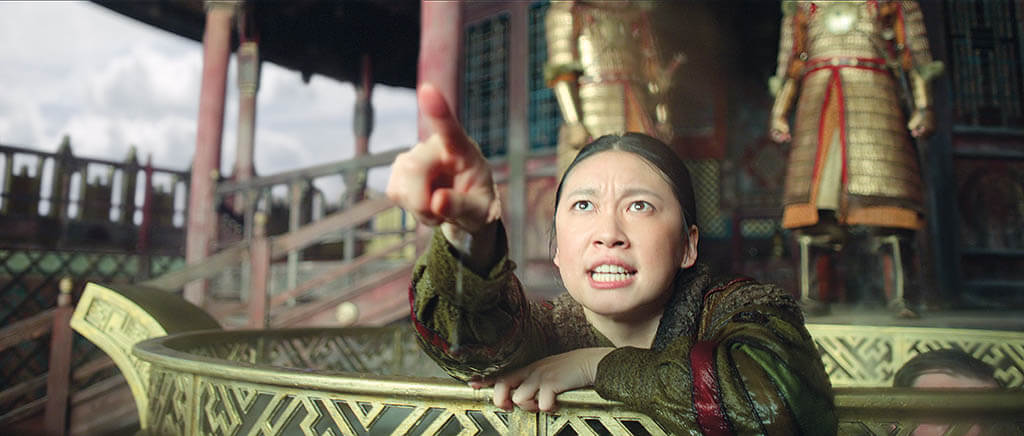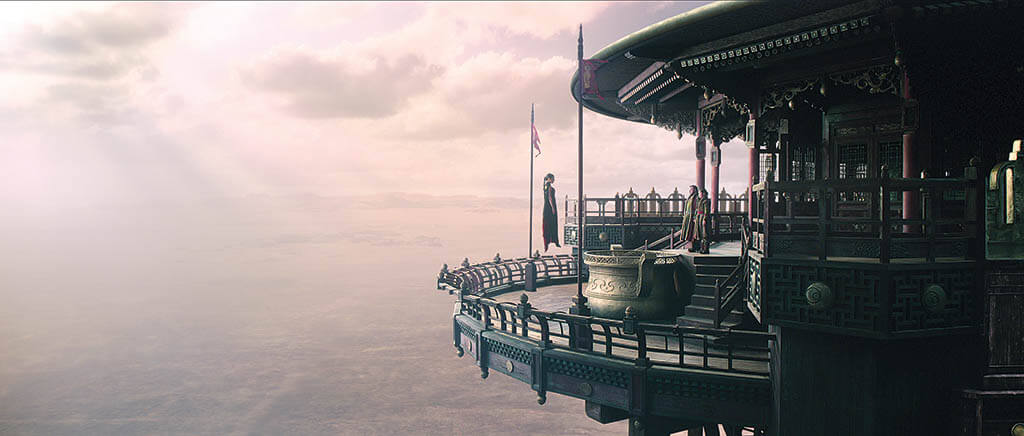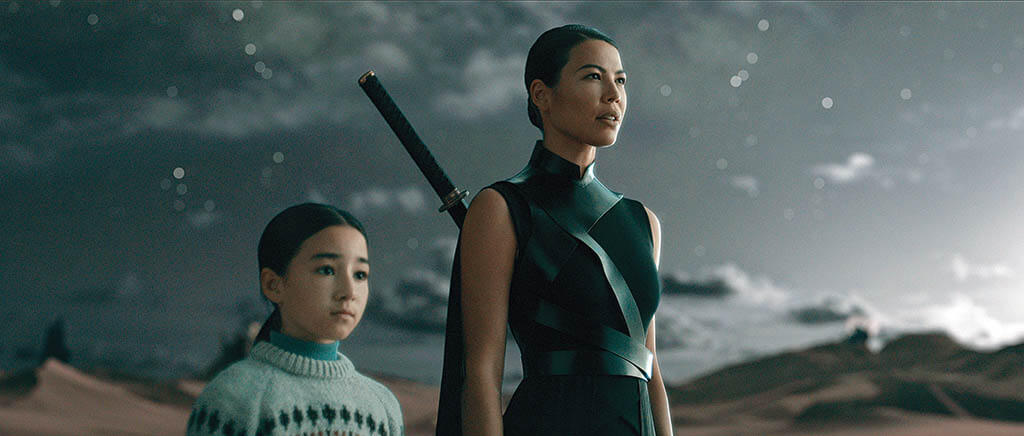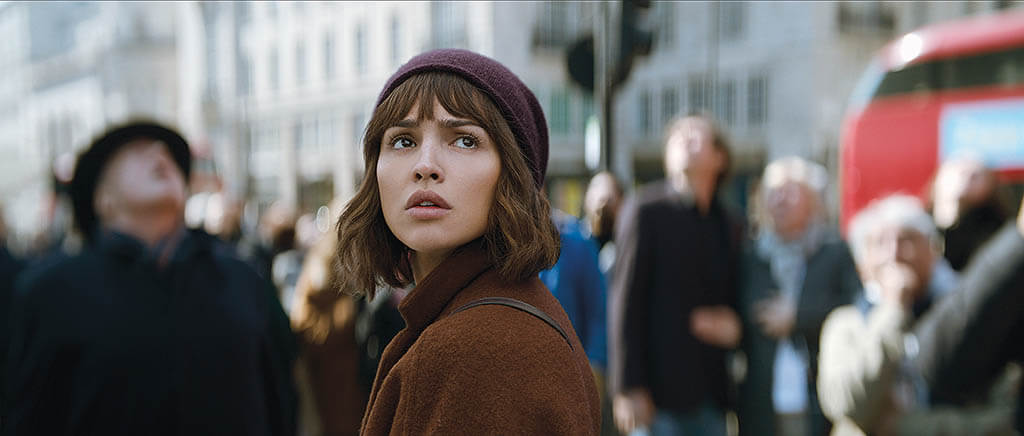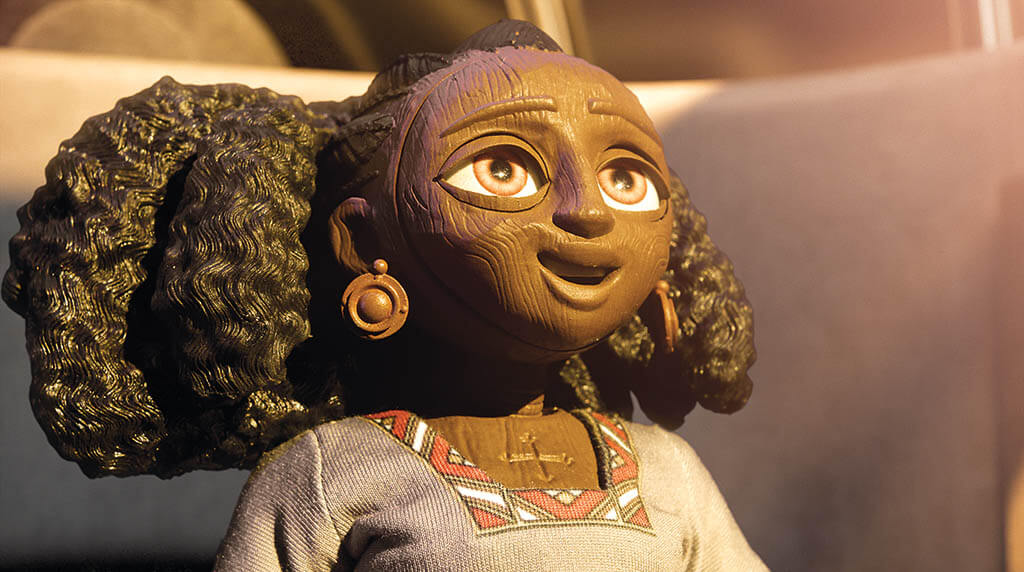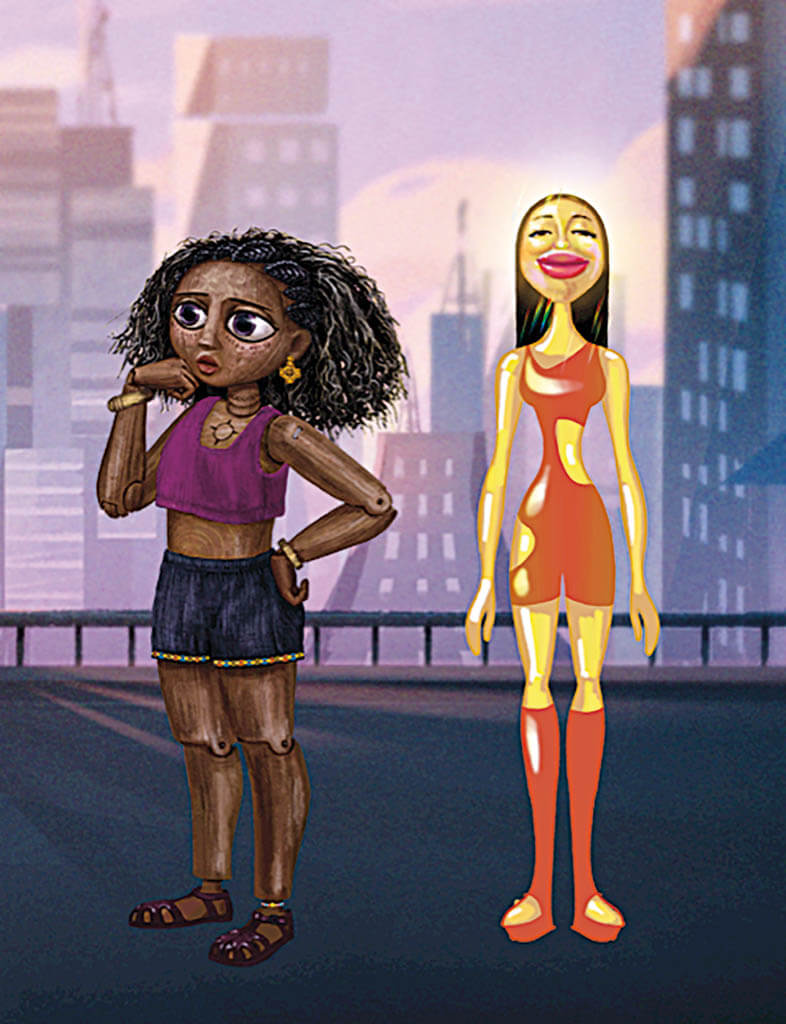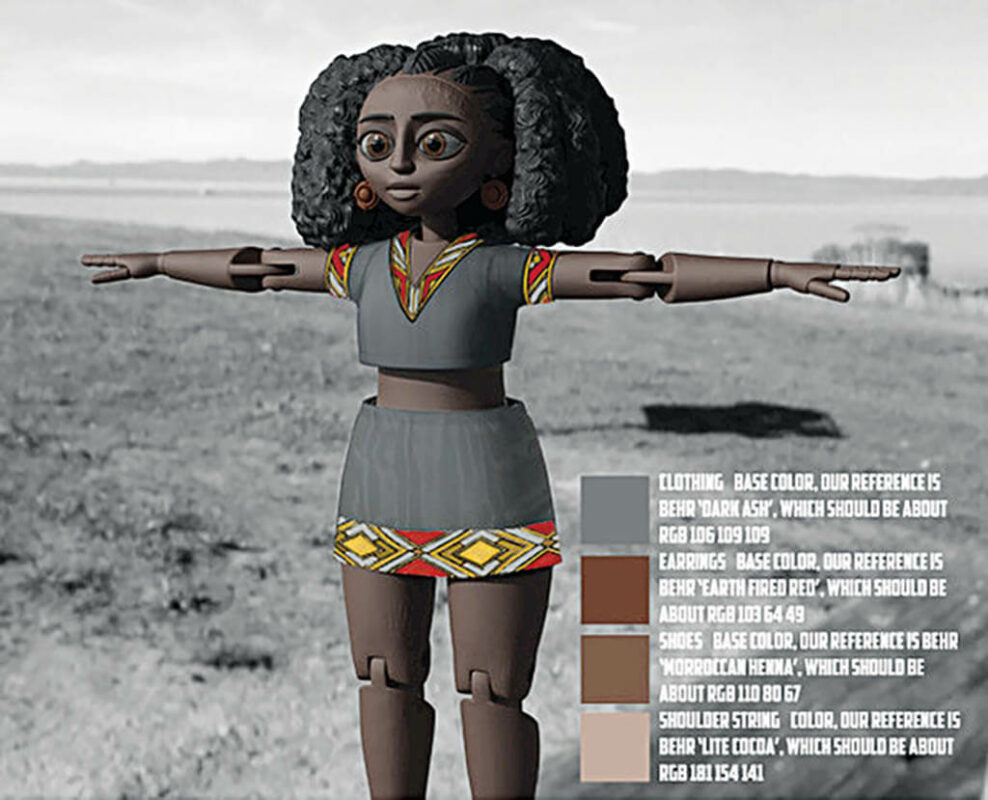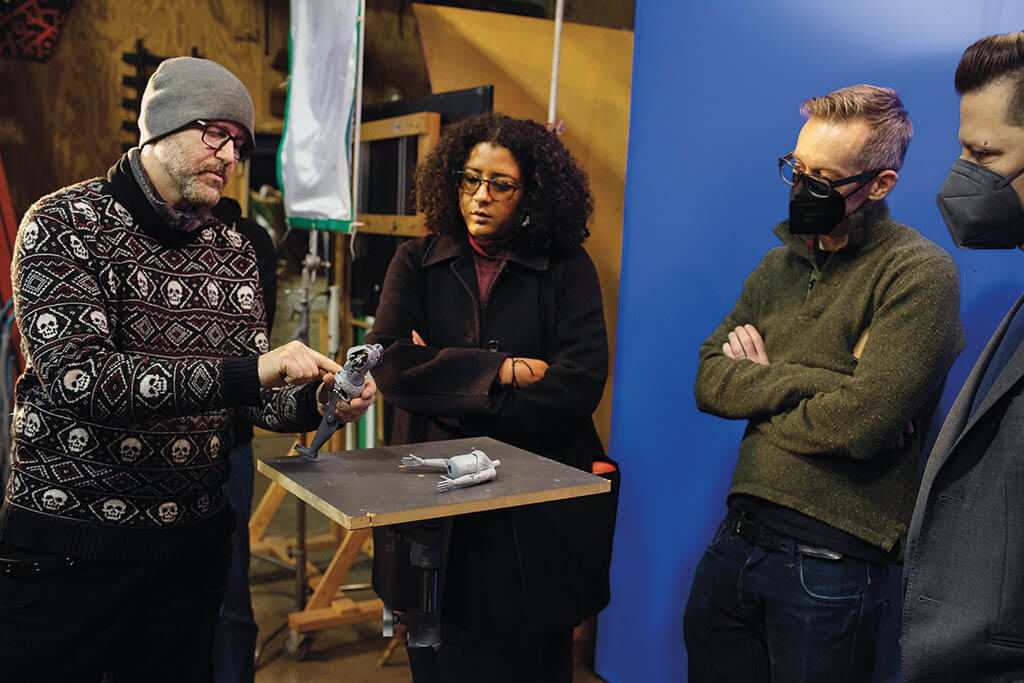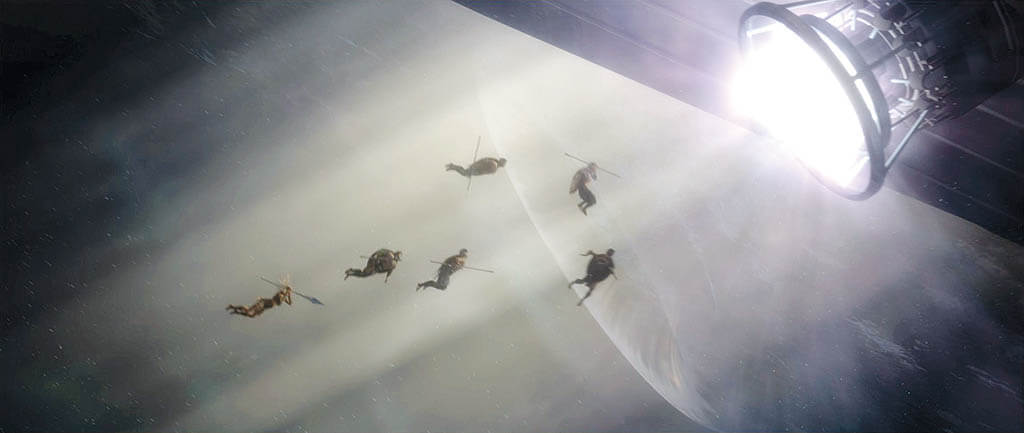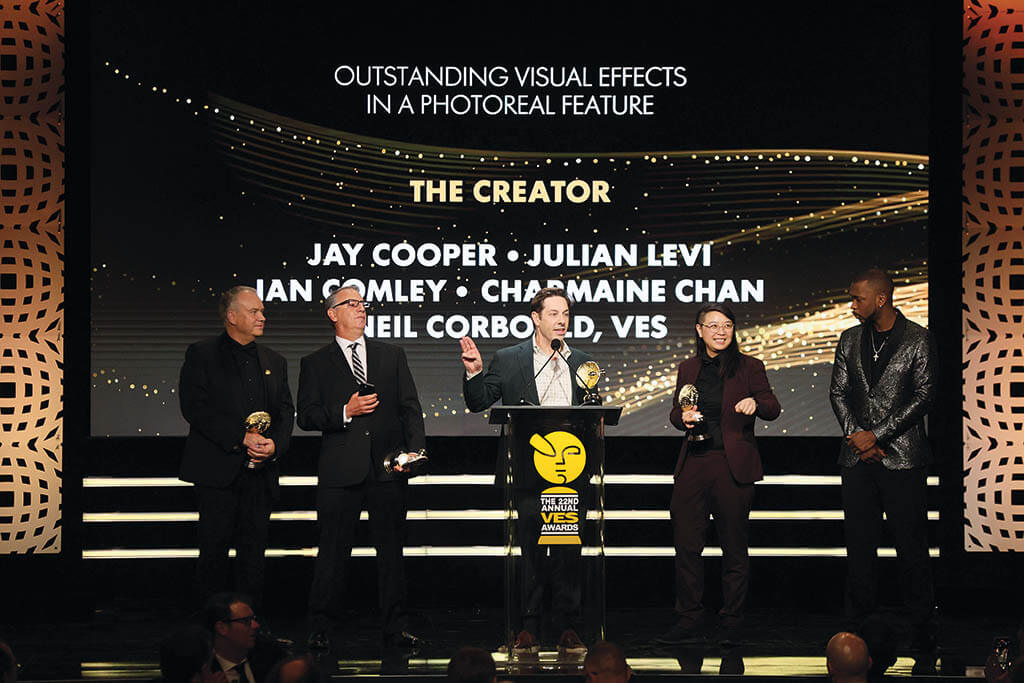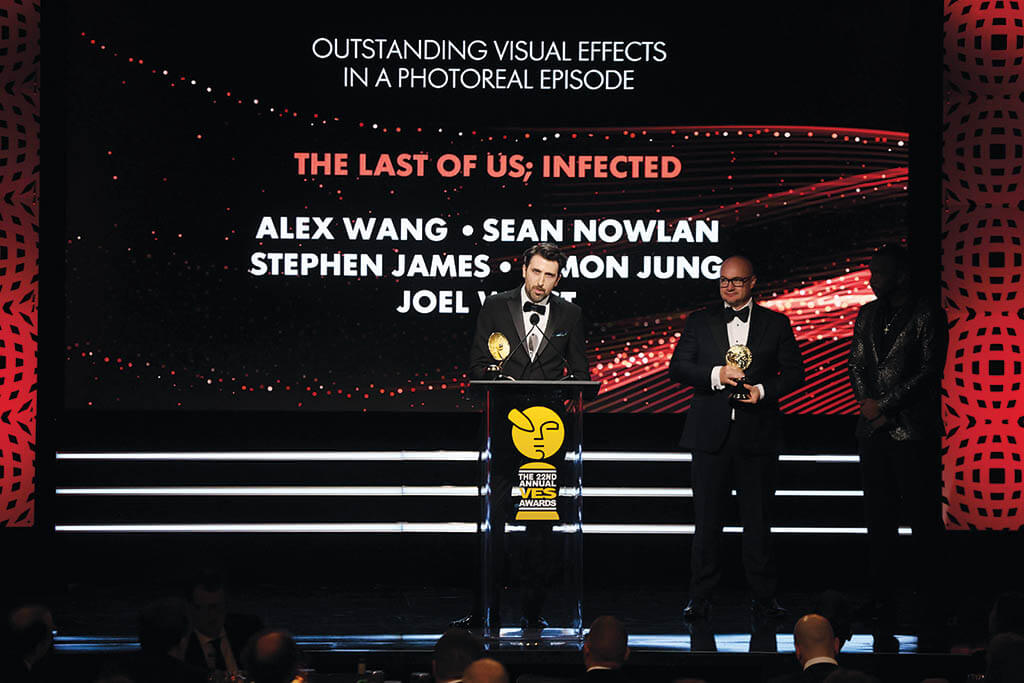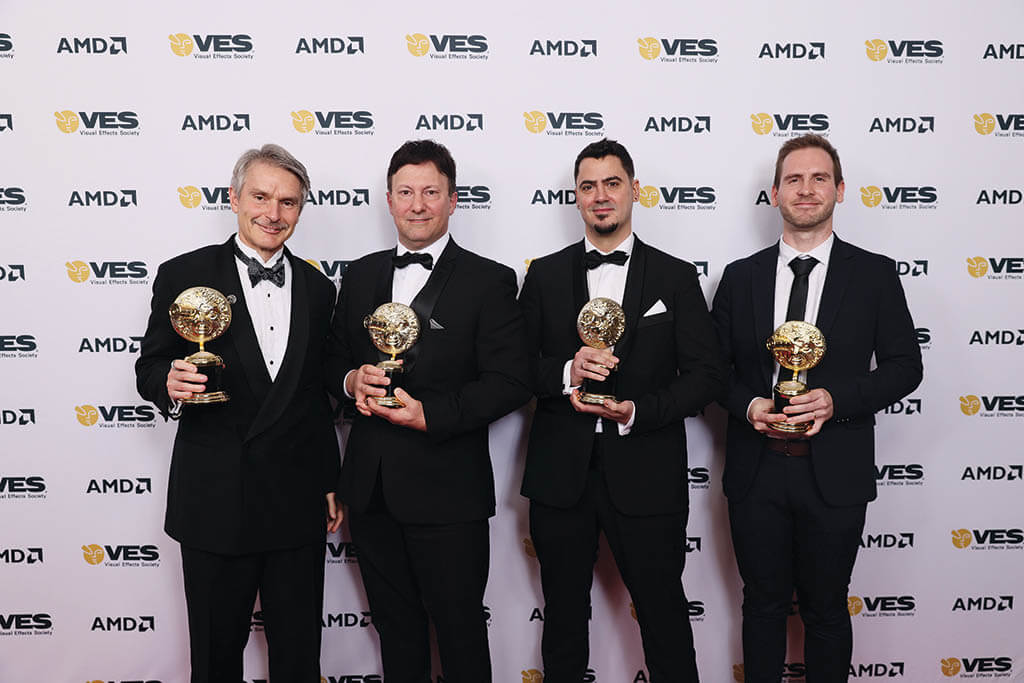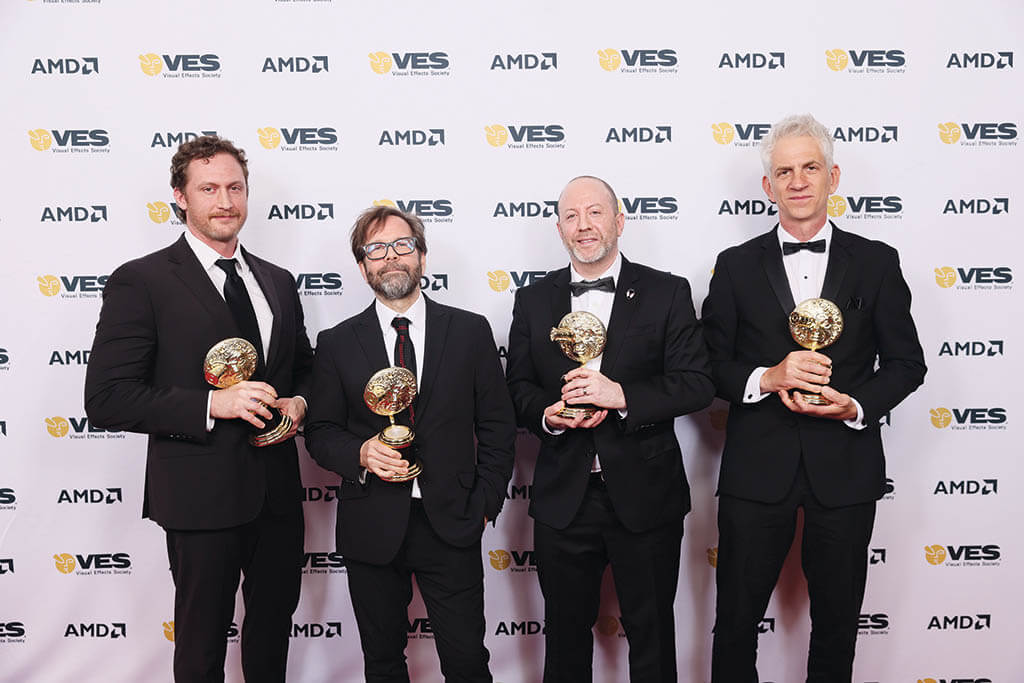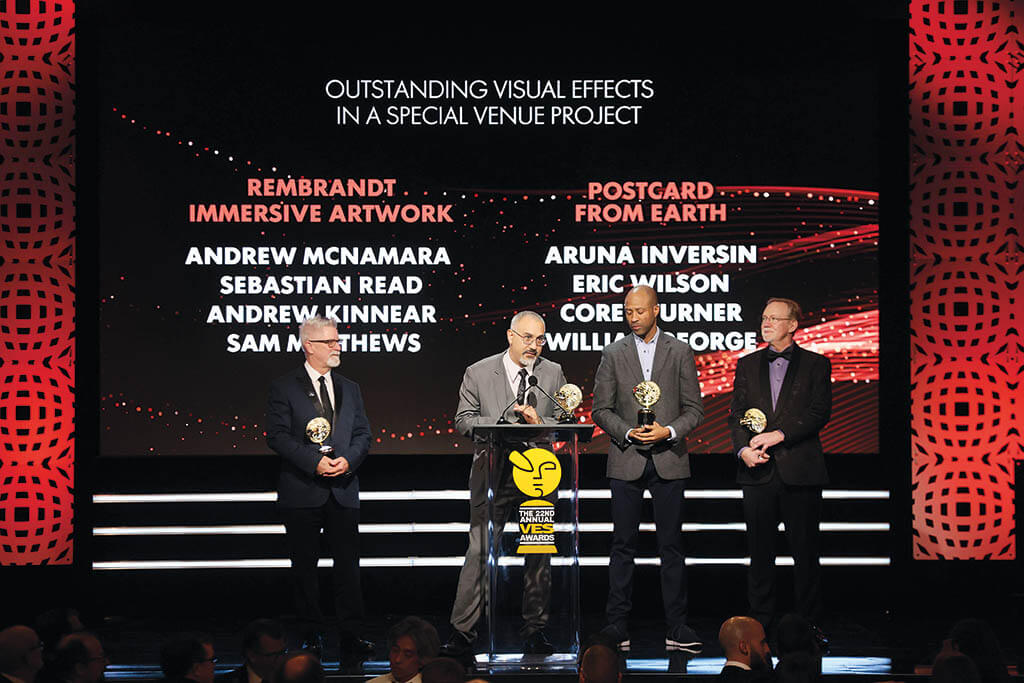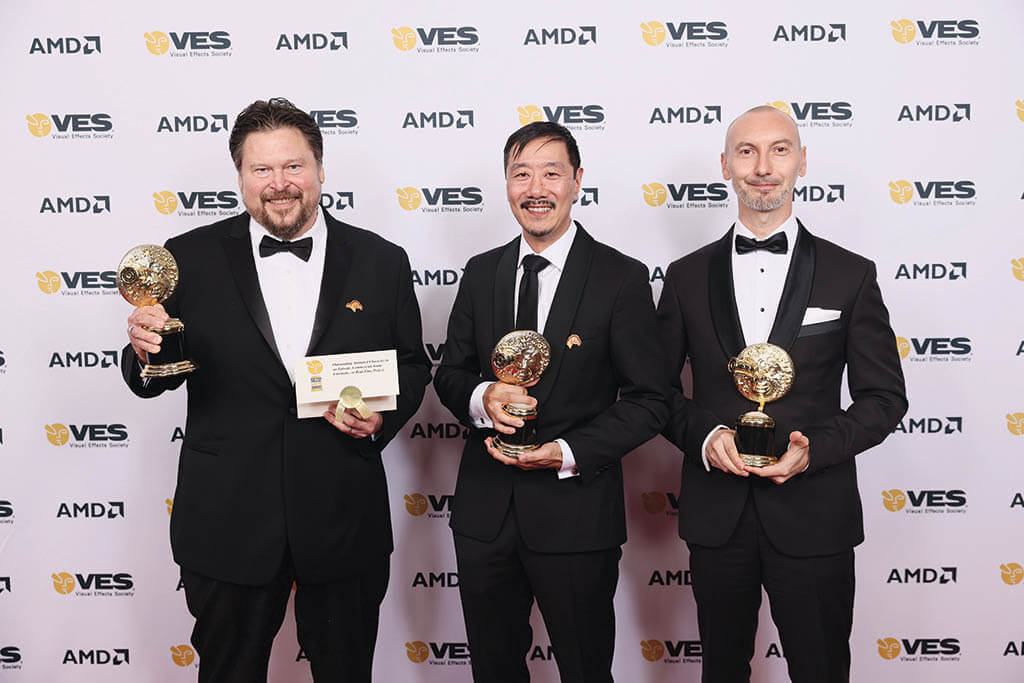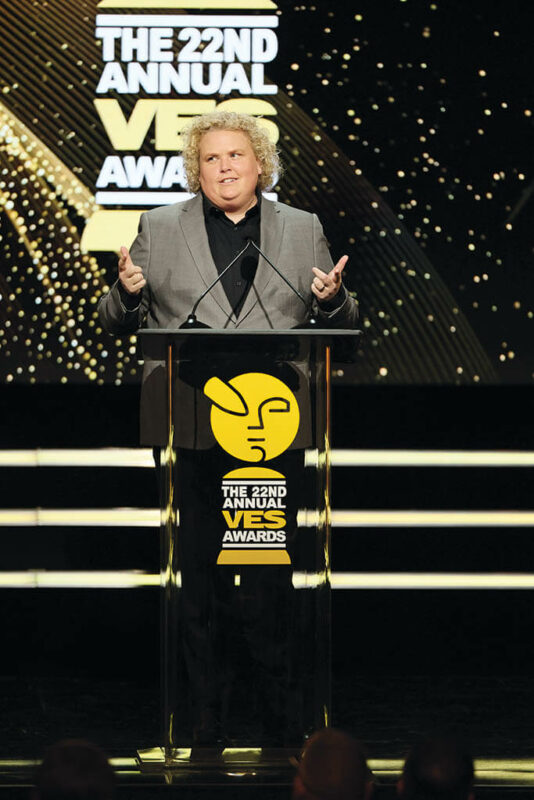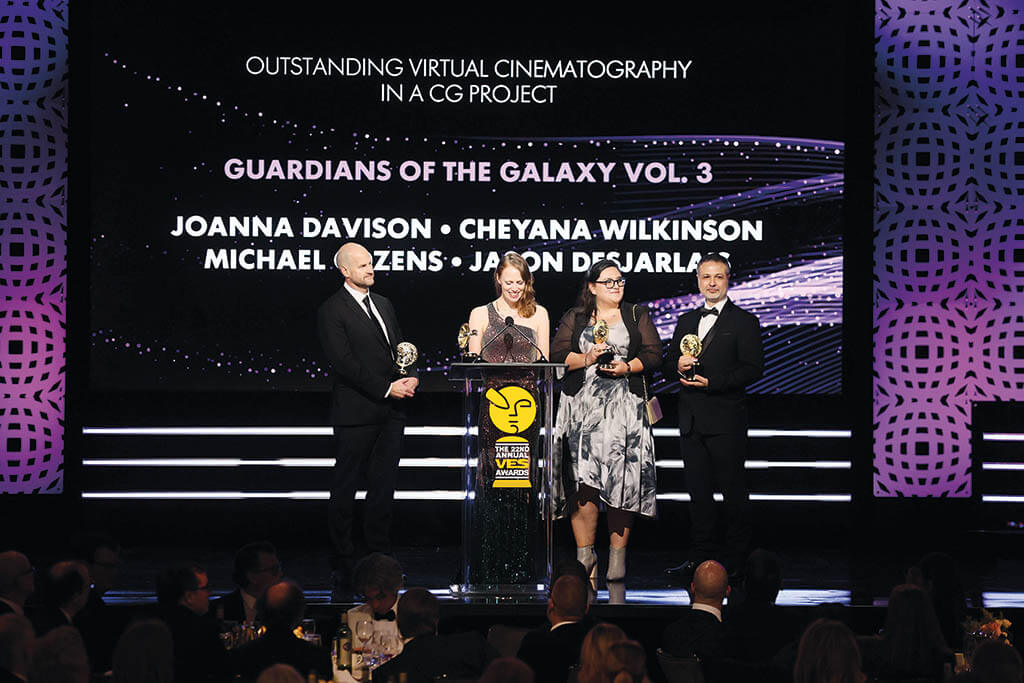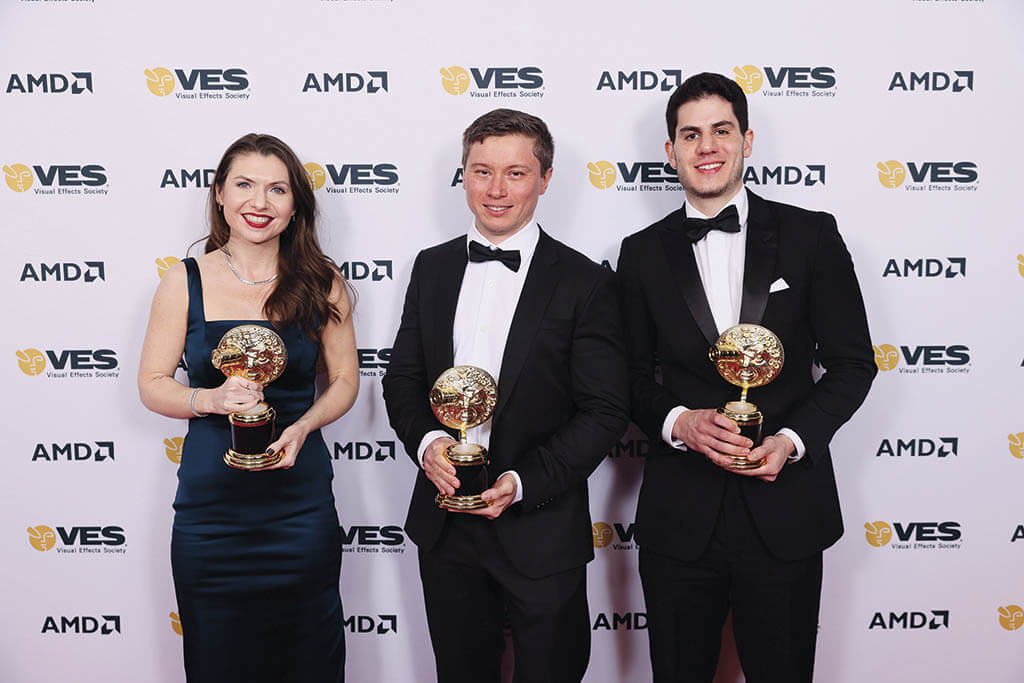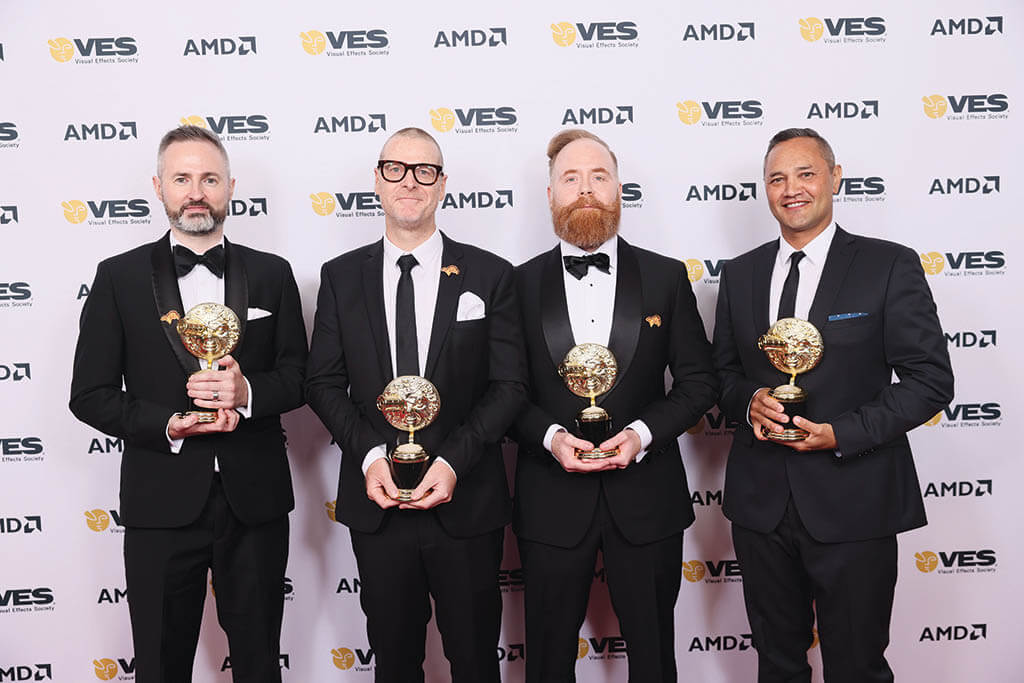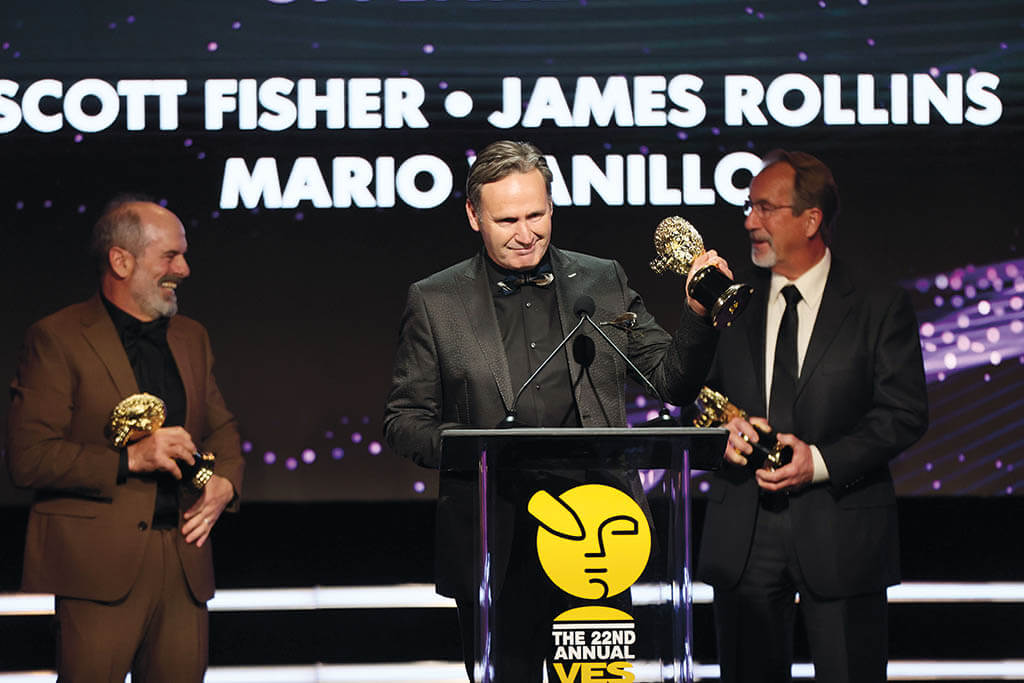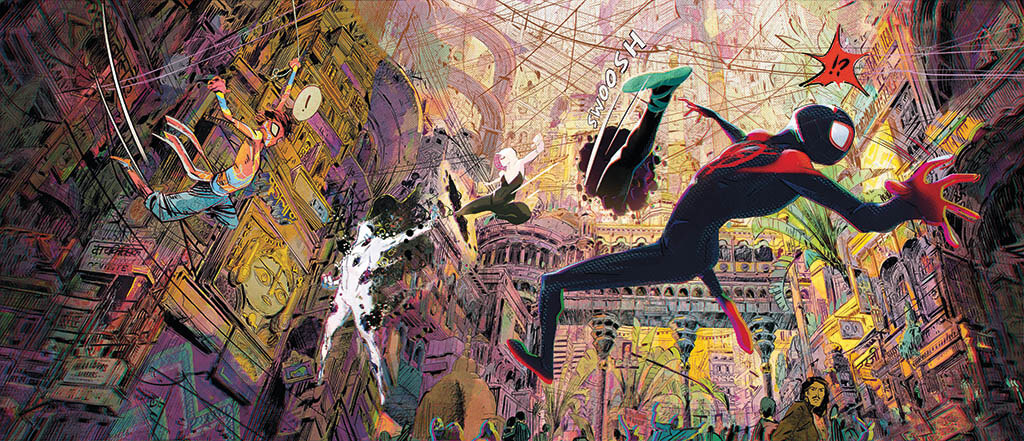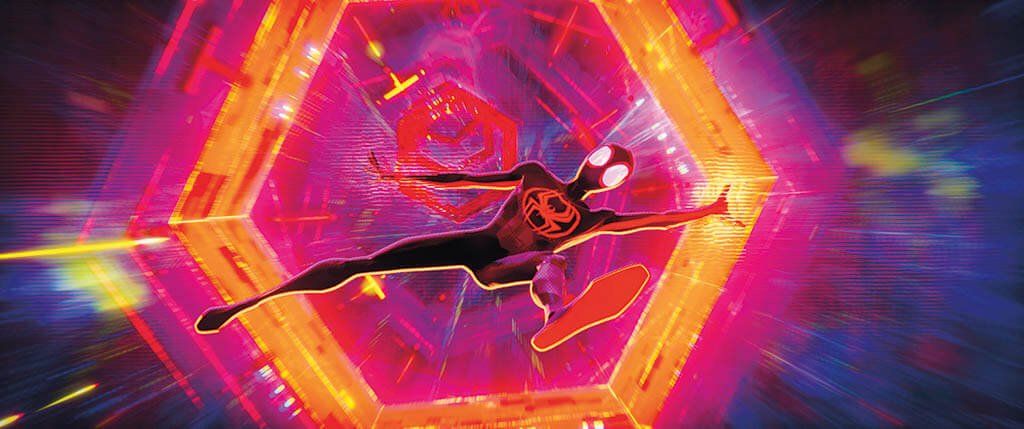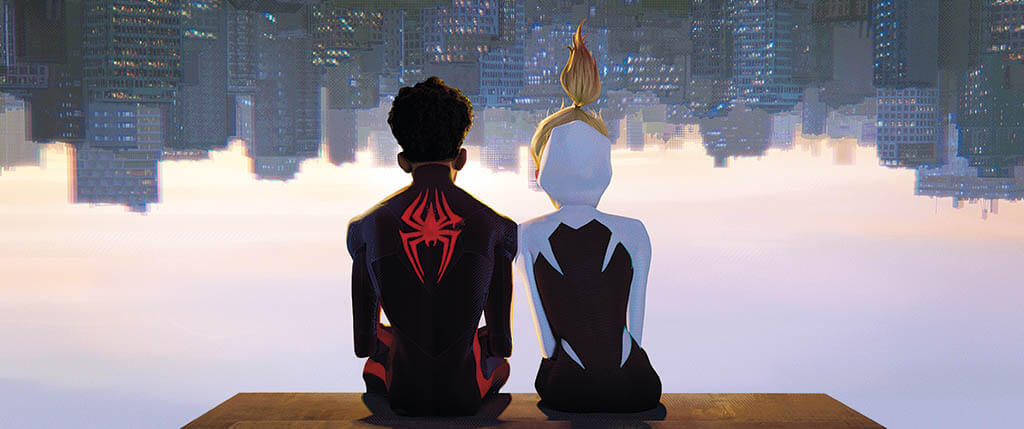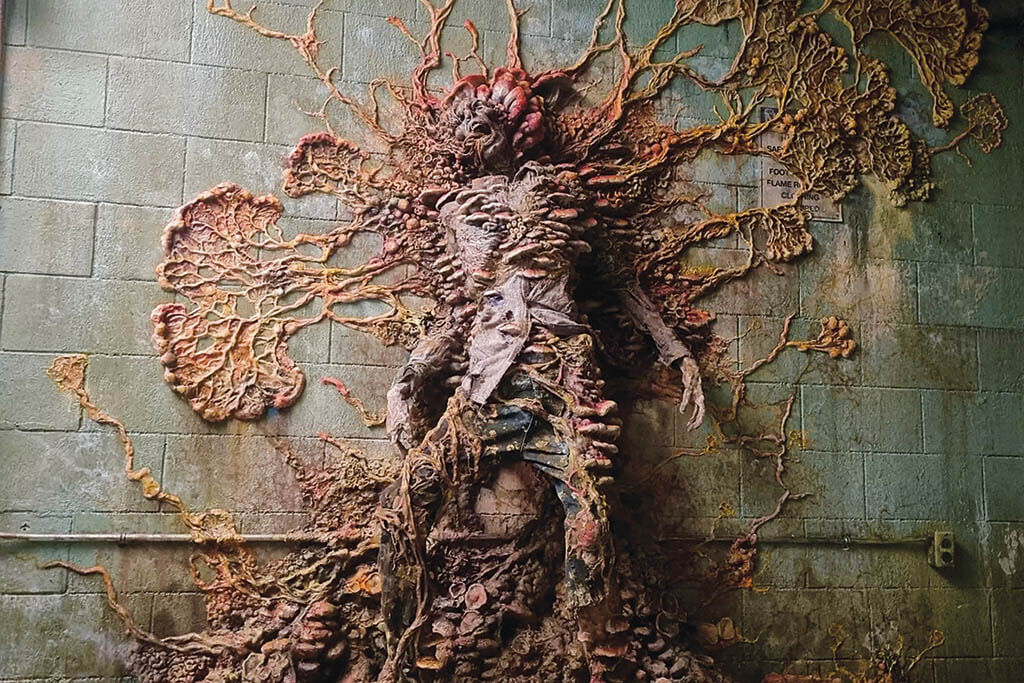By TREVOR HOGG

As expected, Disney’s Pirates of the Caribbean: Dead Man’s Chest plundered a lot of gold at the Visual Effects Society’s 5th annual VES Awards. Held Sunday night at the Kodak Theater Ballroom in Hollywood, the event saw George Lucas present the lifetime achievement award to pioneering effects genius Dennis Muren, whose credits with ILM include the Star Wars movies, Dragonslayer, Jurassic Park, The Hulk and War of the Worlds.
VES exec director Eric Roth started the festivities with an address that underscored the importance of the visual effects industry. He noted that 16 of the 20 top-grossing movies in cinema history have been effects films, but remarked, “Business is not the big story tonight. Artistry is the big story.” He said vfx artists were once regarded at “technological mercenaries,” but are taking their rightful place as the modern-day equivalent of Leonardo DaVinci.
VES Chair Jeff Okun echoed Roth’s remarks, noting that he often asks himself, “Why are we getting this respect?” He explains, “We have magic, we have power and a lot of people love us because we have this power, and a lot of people hate us because of it.” He went on to ask,” Why have we become the Jules Vernes of our day? Because something in society only happens because somebody imagines it. We are stretching what is possible and creating the future for not only our children but our kids, but our kids’ kids.”
The second installment in the Pirates of the Caribbean franchise won in every category in which it was nominated, taking a total of six awards. Wins include Outstanding Animated Character in a Live-Action Motion Picture (Davy Jones), Best Single Visual Effect of the Year (Flying Dutchman sequence), and Outstanding Visual Effects in a Visual Effects-Driven Motion Picture ILM’s John Knoll, Jill Brooks, Hal Hickel and Charlie Gibson accepted the evening’s top award.
Pirates also took the award for Outstanding Compositing in a Motion Picuture, a category presented by Pixar’s Andrew Stanton, who directed A Bug’s Life and Finding Nemo, and is currently attached to direct the studio’s adaptation of Edgar Rice Burroughs’ John Carter of Mars. Stanton remarked on how ironic it was that he was presenting the award since they don’t do much compositing at Pixar, but noted that the effects industry won’t find bigger fans than the 900 “geeks” he works with at Pixar. “For all the time you spend trying to figure out how to do it, we spend even more time trying to figure out how you did it,” he commented.
In introducing Dennis Muren, George Lucas referred to him as “the heart and soul of our organization,” adding, “Dennis is a really great human being. I have never once seen him yell at anybody in an industry that is prone to yelling.” Muren returned the compliment, asking, “Without George, where would we all be?” He went on to encourage the effects artists in the audience to never rest on their laurels. “Take what you think you can do and top that,” he said. “Keep thinking about it and try to come up with interesting new combinations. As soon as we finish a show, I assume [what we’ve done] is obsolete.”
Muren, who has received 15 Oscar nominations to date, said real-time effects technology is the future of the industry and that he and ILM are busy working on bringing that immediacy to the creative process so that film directors can be more involved in the effects stage of production. He also revealed that he is working with Pixar on some sort of project aimed at creating synthesis between animation and visual effects, but wouldn’t comment further on the matter. Muren is also finishing a book he’s writing for vfx artists, and he tells us it will encourage up-and-coming talents to draw knowledge and inspiration from the world around them rather than just studying films. “People today are copying Jurassic Park, but we were copying elephants,” he remarks.
We asked Muren why 1995’s Jurassic Park has held up so well even though CG technology has advanced so much in the 12 years since the ground-breaking film came out. “I think we took more time on shots,” he said. “We didn’t take shortcuts and the schedules are much tighter these days.” He also remarked on the fact that the number of effects shots in the original Jurassic Park is conservative by today’s standards. “There’s no economy anymore. There’s this feeling that if you throw more effects into it, it’s going to be better film. I don’t think so.” Outside of the work done by ILM, Muren tells us he has really been impressed with the effects in the recent releases Children of Men and Charlotte’s Web.
We cornered George Lucas to ask him how the CG-animated Star Wars: Clone Wars television series was coming along but he would only offer, “It looks Fantastic.” He had a bit more to say about the role of the visual effects artist in creating something new for audiences that are bombarded with pixel trickery on a daily basis. “Effects artists are hired to do a job,” he said. “A writer doesn’t set out to top everything he’s ever done. The only ones who have the power to say, ‘lets create something new’ are the studios, and that’s not a high priority for them. Special effects are simply used in telling a story.”
Lending some much-needed irreverence to the affair was film director John Landis, who recalled running into Dennis Muren once at the BAFTAs, the U.K’s equivalent of the Academy Awards. “I was presenting an award with Princess Anne and she didn’t look at me once,” he recalled. “I just wanted to grab her ass.” He went on to note that schlock producer Jack H. Harris put up money to help him finish his first film, Schlock, as well as Muren’s first feature, Equinox, and John Carpenter’s debut flick, Dark Star. “We all got screwed by the same guy!,” he said later.
Backstage, Landis recalled presenting an animation award to a young Cal Arts student by the name of John Lasseter. He says the film was a hand-drawn predecessor to the short Luxo Jr., and that he was so taken by the film that he asked Lasseter for an animation cel, which he has to this day. When asked if he would ever make an animated film himself, the director of Animal House and The Blues Brothers said he actually directed 26 minutes of an animated feature in the early 1990s. The name of the film was The 8th Voyage of Sinbad and it was being made by a Finnish producer who ended up disappearing with the money the Finish government put up for the production. “We had 38 Mexican and Brazilian animators working in North Hollywood and we had spent about a half a million dollars when the Sheriff came and padlocked the studio,” he recalled. “Then when Disney’s Aladdin came out a few years later, the main villain had the same name as ours, Jaffar, and there were so many other similarities.”
A big award winner on the television side was SCI FI Channel’s Battlestar Galactica, which took the prize for Outstanding Visual Effects in a Broadcast Series and was also recognized for its models and miniatures. Meanwhile, Weta Digital’s work on the “Snowball” ad for the Travelers insurance company garnered a win for compositing, as well as the award for Outstanding Visual Effects in a Commercial. That Geico gecko also got some love as the spot titled “Chat” won for Outstanding Animated Character in a Live-Action Broadcast Program, Commercial or Music Video.
The award for Outstanding Animated Character in an Animated Motion Picture was presented to comedian Larry the Cable Guy and the folks at Pixar who worked on the character “Mater” in Cars. Mike Krummhoefener, Tom Sanocki and Nancy Kato worked together to bring the popular character to the screen.
animation_magazine.pdfRead the story »
